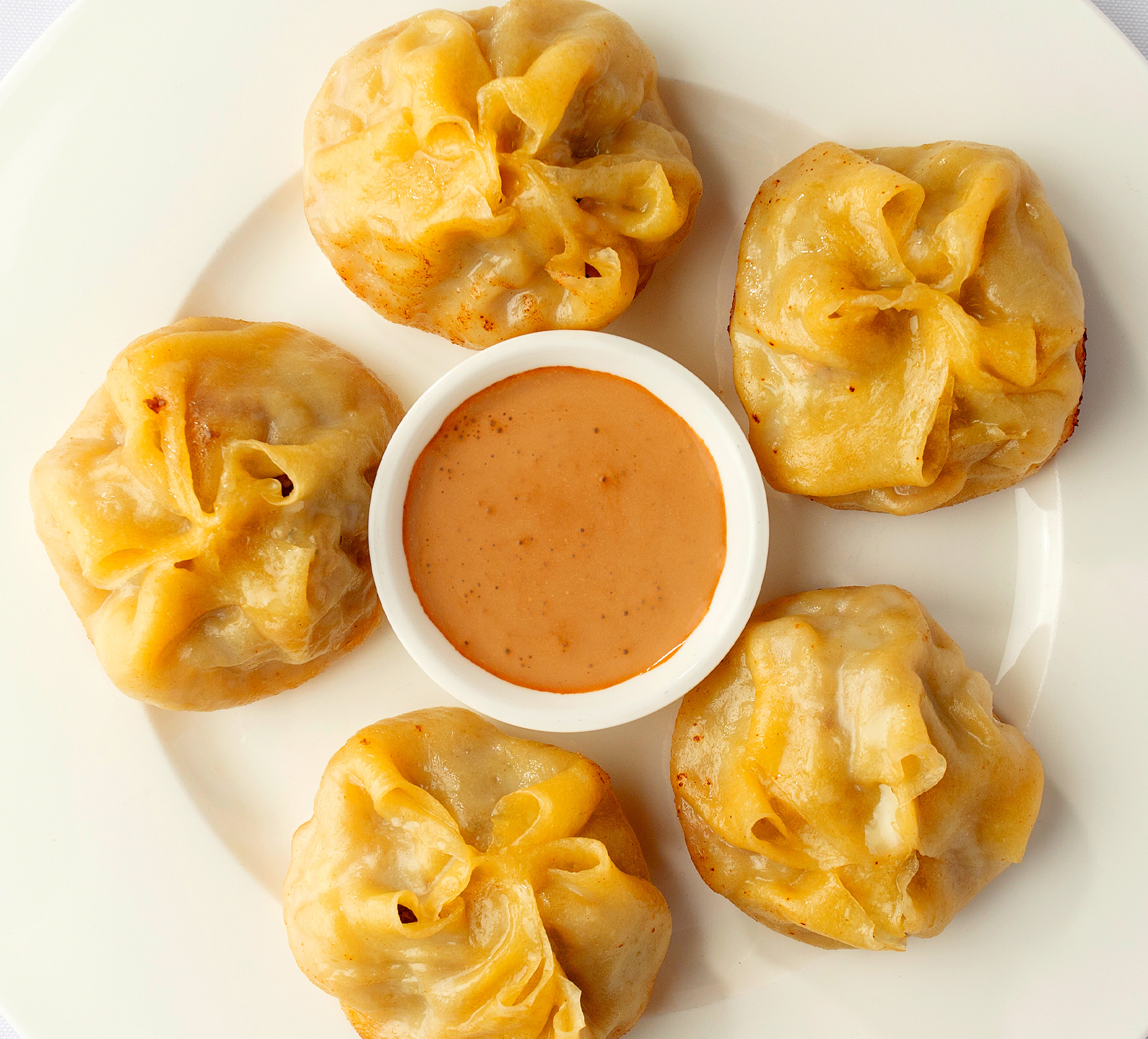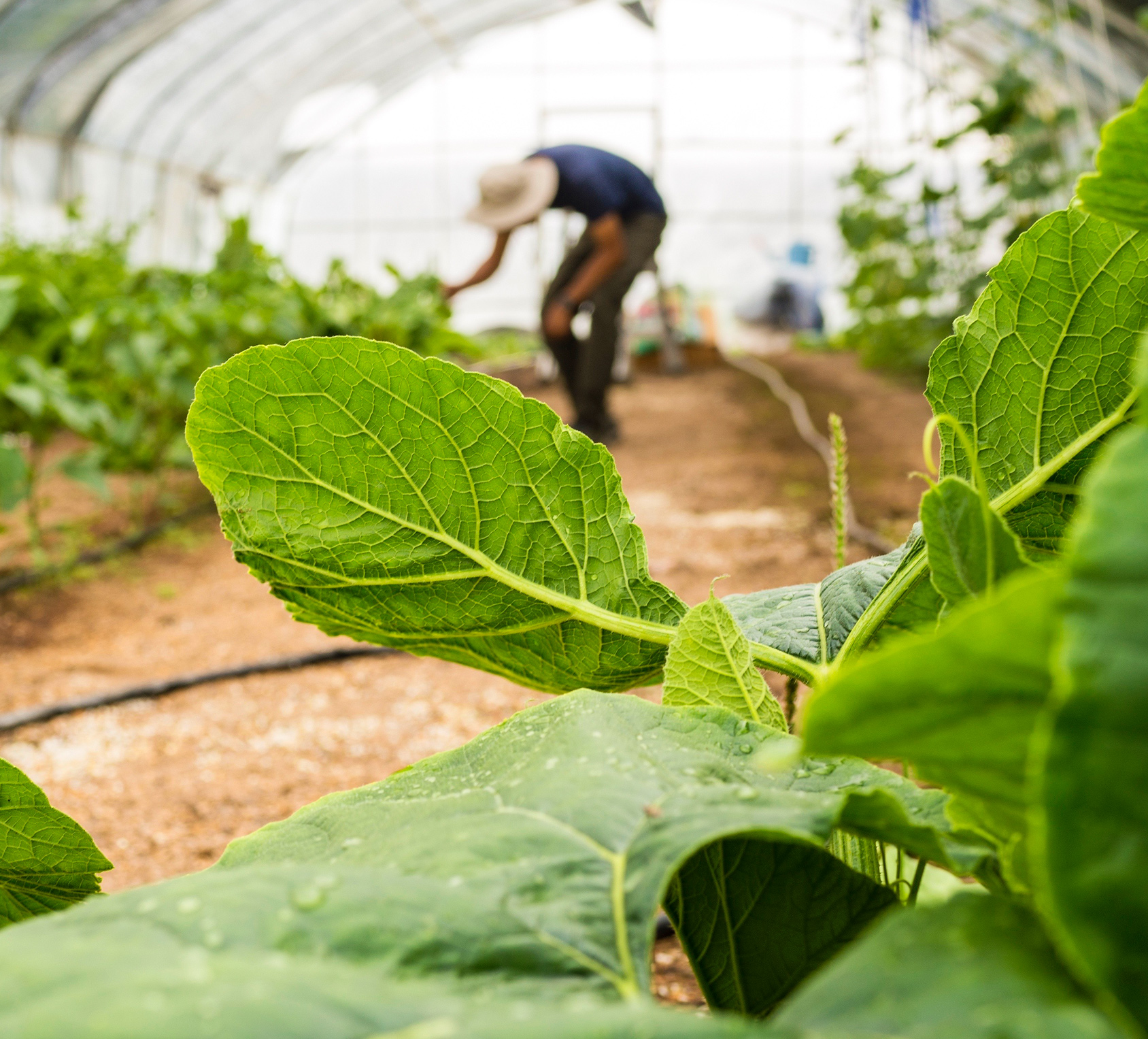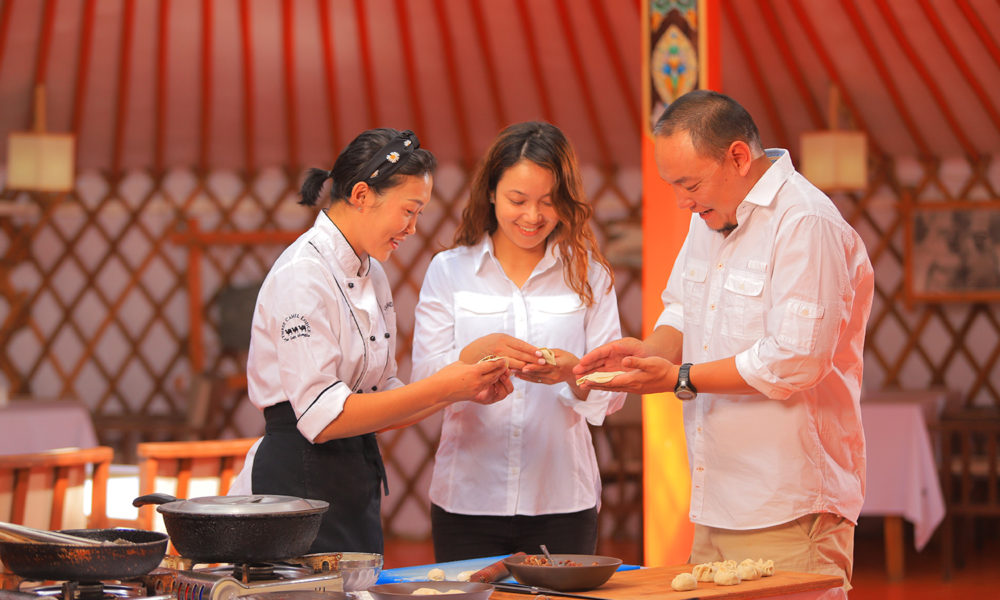The traditional cuisine of Mongolia nourishes the soul. The classic meals are hearty—to enrich people who, for millenniums up to today, live in nature, raise cattle, move their homes several times a year, and thrive in challenging climates.
Simple yet delicious, Mongolia’s dishes were also born of necessity, because the nomads didn’t have time to prepare diverse or complicated dishes while they tended their animals.
The gastronomy has been naturally influenced by region, and the peoples who once comprised the larger Mongolian empire under Chinggis Kahn. Namely China, their neighbor to the south, and Russia to the north. The most common dishes consist of meats and dairy—those of the animals tamed and herded: cattle, sheep, goats, horses, camels, and some game meat.
These meats are often cooked directly over fire or on special occations with stones heated in a fire. They are also commonly added to stews, and cooked within dumplings that vary by region, season and cooking style.
Dumplings are a revered staple and artfully crafted. The variety includes buuz (traditional steamed dumpling), khuushuur (meat-filled pastry), and bansh (sealed and boiled).

Tsuivan, Mongolian fried noodles, is a favorite dish, and the noodles go deliciously in stews which combine the unique noodle with the savory flavors of traditional meats such as mutton, beef or pork, with vegetables such as cabbage and carrots.
Mongolia may not be an agrarian country historically, as cold winters inhibit farming. Yet visitors find fresh fruit and vegetables readily grow here, including potatoes, wheat, barley, and corn—and there are a number of unique foods native to the land.
Sea buckhorn grows naturally, producing orange berries, and is used in both traditional medicine and foods. Considered a “superberry” it is rich in vitamins C and E and known to hold all four Omega fatty acids. You will find it in juices, jams, teas, pies, and liquors.
Other common wild berries include clack currants, cranberries, blueberries and strawberries.
Garlic scapes—the tender spirally stems of hardneck garlic—and wild chives are also cultivated naturally here and used in dishes such as soups.
Now with greenhouses, it is easy to raise produce such as cucumbers, peppers, and tomatoes.

Milk is perhaps the most unique staple of the traditional Mongolian diet. Fermented mare’s milk, called airag, is the national beverage. Upon entering a nomadic Mongolian’s ger, you will customarily be offered a cup or bowl of airag, which to be polite you should accept you’re your right hand while holding the right elbow with your left hand. You then take three sips, as Mongolians are a superstitious people, and three is the auspicious number. You then pass the bowl, again with your right hand.
Plain milk is of course had with cereal, and also processed into yogurt, byaslag (cheese) and aaruul (dried curds). It is also boiled and separated to produce öröm (clotted cream).
The most consumed beverage in Mongolia is suutei tsai, literally tea with milk, a simple recipe of green or black tea, milk and salt. Yet vodka is the most common alcoholic beverage for celebrations.
Their most popular vodka brand in Mongolia is Chinggis, produced in the nation’s capital of Ulaanbaatar. Distilled an incredible eight times to remove impurities, it bears hints or spice and a warm finish. You will find it listed on the top 10 lists of many vodka aficionados.
The custom for drinking vodka begins the same as with airag. Served in a silver bowl, you accept it with your right hand. You then dip the ring finger of your right hand into the vodka and, using your thumb, flick three times—behind you, to the past behind you; above you, to the present; and in front of you, to the future.

